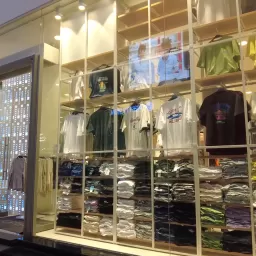Retail And Distribution
Retail and distribution are critical aspects of the fashion industry that involve the sale and movement of fashion products from manufacturers to consumers.
 Clothing & Accessories:
The Clothing & Accessories industry encompasses the production, manufacturing, distribution, and retail of apparel, fashion accessories, and related products.
Clothing & Accessories:
The Clothing & Accessories industry encompasses the production, manufacturing, distribution, and retail of apparel, fashion accessories, and related products.
Retail and distribution are critical aspects of the fashion industry that involve the sale and movement of fashion products from manufacturers to consumers. These processes include various stages and players, each contributing to the overall success of the industry. Here’s an overview of retail and distribution in the context of fashion:
Retail:
-
Types of Retailers:
- Department Stores: Large stores offering a wide range of products across different categories.
- Specialty Stores: Focus on a specific category or niche, such as footwear, lingerie, or sportswear.
- Discount Stores: Offer products at lower prices, often with a focus on value and volume.
- Boutiques: Small, specialized stores known for unique and curated selections.
- Online Retailers: E-commerce platforms that sell fashion products over the internet.
-
Retail Operations:
- Visual Merchandising: Involves creating attractive product displays to enhance the shopping experience.
- Store Layout: The arrangement of products, aisles, and displays within a retail space.
- Customer Service: Providing assistance, guidance, and a positive experience for shoppers.
- Inventory Management: Ensuring adequate stock levels and timely restocking of products.
-
Retail Trends:
- E-commerce: The rise of online shopping has transformed the retail landscape.
- Omnichannel Retailing: Integration of online and offline channels to provide a seamless shopping experience.
- Sustainability: Consumers increasingly seek environmentally friendly and ethically produced products.
- Personalization: Tailoring the shopping experience based on individual preferences and behaviors.
Distribution:
-
Supply Chain:
- Manufacturer: Produces fashion products, often in collaboration with designers.
- Distributor: Acts as an intermediary between manufacturers and retailers, handling logistics and bulk shipments.
- Retailer: Sells products directly to consumers, whether through physical stores or online platforms.
-
Logistics:
- Warehousing: Storage and management of inventory before distribution to retailers.
- Transportation: Shipping products from manufacturers to distribution centers and then to retail locations.
-
Distribution Channels:
- Direct-to-Consumer (DTC): Manufacturers sell directly to consumers, bypassing traditional retail channels.
- Wholesale: Manufacturers sell products in bulk to retailers, who then sell to consumers.
- Multi-tier Distribution: Involves multiple levels of distribution, with several intermediaries between manufacturers and consumers.
-
Global Distribution:
- International Markets: Many fashion brands have a global presence, requiring complex distribution networks.
- Import and Export: Involves the movement of products across international borders, often subject to trade regulations.
-
Technology in Distribution:
- Inventory Management Systems: Automated systems for tracking and managing inventory levels.
- RFID Technology: Radio-frequency identification for real-time tracking of products in the supply chain.
- Data Analytics: Utilizing data to optimize distribution processes and forecast demand.
Both retail and distribution are dynamic and constantly evolving, influenced by consumer preferences, technological advancements, and global market trends. Successful fashion brands often employ effective retail and distribution strategies to reach and engage their target audience while ensuring efficient product availability and delivery.